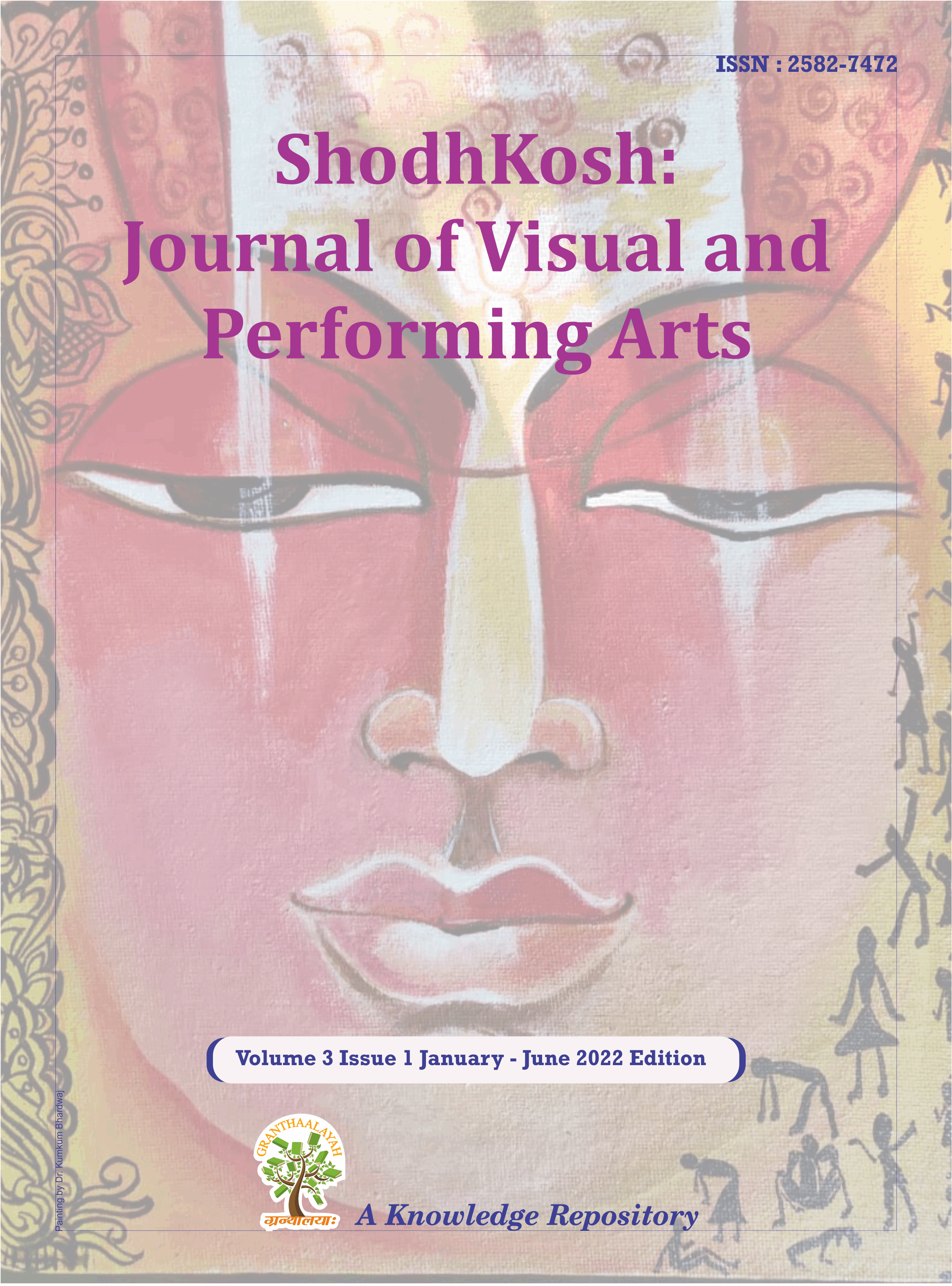EVOLUTION OF INDIAN VISUAL ARTS WITH FRESH PERSPECTIVES: A HISTORICAL ANALYSIS
DOI:
https://doi.org/10.29121/shodhkosh.v3.i1.2022.5793Keywords:
Indian, Visual Arts, Historical AnalysisAbstract [English]
Paintings and sculptures are among the most sensitive and expressive forms of art, capturing human thoughts and emotions through the use of line, colour, and form. Long before recorded history—when early humans still lived in caves—they felt a deep need to express their creativity. They painted the walls of their rock shelters, driven by an innate sense of beauty and imagination. In Indian culture, the love for colour, pattern, and artistic expression is deeply rooted. Even during historical periods where we have limited documentation, Indians created vibrant drawings and paintings that reflect this enduring passion.
References
Randhawa, M S. Roop‐ Lekha, vol. 1, Issue 1 & 2, Dr W G Archer Memorial Number, All India Fine Arts and Crafts Society, NewDelhi
Mukhopadhyay, A. ' The Art Situation before 1940', Lalit Kala Contemporary, (1985).
Sinha, Ajai. 'Contemporary Indian Art: AQuestion of Method', Art Journal, (1999). DOI: https://doi.org/10.1080/00043249.1999.10791951
Garimella, Annpurna, ed. Mulk Raj Anand Shaping the Indian Modern, Mumbai: Marg Publications, 2005.
Downloads
Published
How to Cite
Issue
Section
License
Copyright (c) 2022 Sanjeev Kumar Mishra

This work is licensed under a Creative Commons Attribution 4.0 International License.
With the licence CC-BY, authors retain the copyright, allowing anyone to download, reuse, re-print, modify, distribute, and/or copy their contribution. The work must be properly attributed to its author.
It is not necessary to ask for further permission from the author or journal board.
This journal provides immediate open access to its content on the principle that making research freely available to the public supports a greater global exchange of knowledge.































